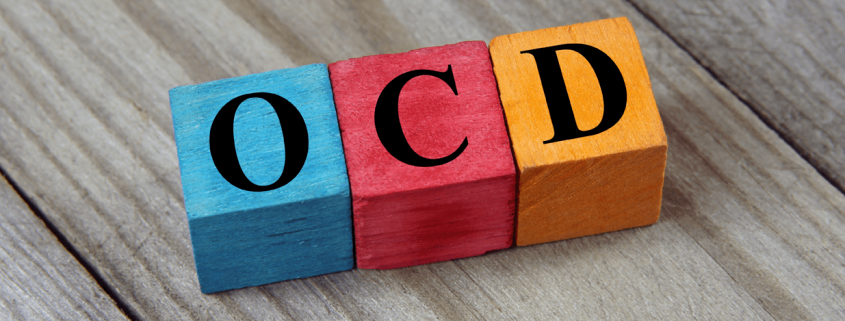OCD (Obsessive-Compulsive Disorders) is not a mental illness, although many with the disorder are afraid to be perceived as mental insanity of the environment. OCD is found in all levels of difficulty, ranging from the mild to occasional occurrence to the highly debilitating state, where virtually all night’s awake hours are seized by obsessions and actions.
By counteracting them, the affected person may feel discomfort or become anxious. It causes the pain of an anxiety disorder.
2 – 3% of the population is affected by OCD.
Obsessive and compulsive actions
Lighter constraints are relatively frequent and are found in between 15 and 30% of the population. 1-2% of the population suffer from OCD to such an extent that they can not have a normal everyday life. OCD is found in all degrees, ranging from the very mild with only a few instances to the difficult conditions of compulsion and forced labor around the clock. Some OCD sufferers have only compulsive thoughts, but most have a combination of compulsive thoughts and forced acts.
Obsessive thoughts: Performances that appear again and again in consciousness, and as the OCD-hit itself perceives as exaggerated or disturbing, but feels compelled to think. There can also be long strips that can be so uninterrupted that it’s almost impossible to think otherwise. The performances can, for example, be an excessive fear of dirt and infection, or blasphemous words, sentences, sexual images or sexual violence or they may be a compulsive fear of performing acts of violence or fear of losing people you love. The thoughts often lead to forced acts that are performed to neutralize or harm the mind. The thoughts are often perceived as scary and very real for the OCD-hit.
Foreclosures: Actions repeated over and over, even though they hit well that they are excessive or unreasonable. Often forced labor is a coincidence with obsessive thoughts and is carried out in an effort to neutralize or harm them. By opposing its urge, one can become anxious. One example is the laundry: the hands are washed for a very long time and many times a day. If the “ritual” is skipped, it causes anxious thoughts of getting sick because of bacteria.
OCD is not a mental illness, although many with the disorder are afraid to be perceived as insanity. Obsessive thoughts and compulsive actions can also be included as symptoms in other diagnoses such as eating disorders , personality disorders, anxiety, body dysmorphic disorder and Tourette’s syndrome .
Possible consequences
OCD sufferers often experience a number of concurrent disorders such as eating disorders (both anorexia , bulimia and forced eating ), depression , anxiety (especially social anxiety , phobia and panic disorder ) and suicidal thoughts and actions.
People with OCD can feel ashamed of suffering and wish to conceal their symptoms for the environment, which may lead to social isolation. Therefore, prompt and correct treatment of the disorder is important.
Causes of OCD
Cause The cause is not finally cleared, but after the recent years of intensive research into the condition, one can now assume that the disorder can be due to a combination of psychological and neurobiological causes where a disorder in one of the brain’s signaling agents, serotonin, plays a very important role.
For example, in the latest research, it has been shown that a particular type of streptococcal bacteria can give children OCD. The type of OCD is also called PANDAS, an abbreviation for Pediatric Autoimmune Neuropsychiatric Disorders Associated With Streptococcal Infection.
Neurobiological explanation
Studies have shown that OCD-affected have reduced activity of the signal serotonin specific sites in the brain. It can explain that SSRIs ( antidepressant drugs ) by affecting serotonin flow can reduce the symptoms. The studies show that serotonin is affected, but not why it is.
It is also possible to have a congenital biological vulnerability to develop OCD. Gemini surveys show that there is a greater risk of getting the disease if a single-legged twin suffers from the disease than if a two-legged twin has it. If the parents have OCD, about 10% percent are more likely to get it. However, that does not mean that they are the same constraints or forced acts as the parents.
Psychological explanation
OCD often begins early in life, and in many there is an external cause of the disease such as death or crisis .
Treatment
OCD is a gray area disease where the affected people are too sick to cope with the disorder themselves and too fast to receive competent public treatment. OCD-sufferers are therefore often left to self-financing, which may result in no help and the symptoms worsen. It is widely accepted that optimal treatment is achieved through a combination of cognitive behavioral therapy (CAT) and SSRIs . However, other treatments have not been investigated.
Cognitive Behavioral Therapy (CAT): This type of therapy has proven to be very useful to OCD. Typically, the treatment takes place in a private practitioner psychologist and requires self-payment. In 2011, however, it was possible for OCD-affected between 18 and 28 years to receive a grant for psychological treatment. And for children up to 18 years, treatment is free if necessary.
Medicine: OCD is treated with medication using antidepressant medicine, most commonly SSRI medicine ; It’s a cheap way to pacify the disorder. The medicine affects the serotonin in the brain by inhibiting the reuptake of this substance in the spaces between the brain’s nerve cells (the so-called synapse spells ). This causes the concentration of available serotonin in the brain to increase. Medical treatment usually takes place in a private practitioner psychiatrist, and conversations with him are paid by the public. Medical treatment of children takes place by a specialist in child and adolescent psychiatry .

